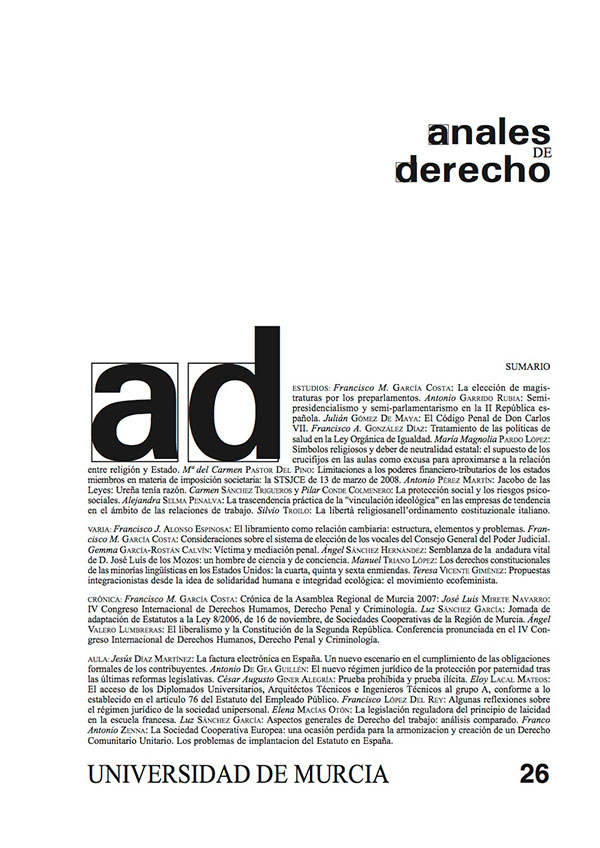Semi-presidencialismo y semi-parlamentarismo en la II República española
Abstract
The breakdown of the Spanish Republic has been analyzed generally within of a subset of parliamentary regimes with a fragmented and polarized multiparty system, and many of the features (political mobilization, the hostile opposition of fascism, communism, traditionalism and monarchism, combined with cleavages –class, regional and religious issues) that were relevant to the crisis and collapse of other European democracies between the two world wars (Weimar, Austria, Portugal). The recent literature on comparative semi-presidentialism has highlighted that the system depends on the personal appeal and ability of the in- cumbent, party support of the president in the chamber, and the influence of the president within his party, his relations with the main political leaders, and so on. Spain (1931-1936) and similar regimes in Turkey, Lebanon and Indonesia have not been included in the analysis of semi-presidential systems of government for the reason that they have a president chosen indirectly by the assembly or an electoral college. However, these regimes share the characteristics of mixed systems: some of these assembly-selected presidents have the power to dissolve the legislature, considerable authority over the formation and reshuffling of cabinets and legislative powers that exceeded those of heads of state in parliamentary regimes. In the Spanish Republic, since the 1931 Constitution granted the President of the Republic powers relating to the formation and survival of cabinet that exceeded the role of the heads of state (monarchs or presidents) in parliamentary regimes, the system was not pure parliamentarism. Semi-parliamentary/semi-presidential system in Spain was a more risk-prone arrangement than the pure parliamentarism in a context of polarized and unstructured multipartism. Therefore, some problems of new democracies flow out of the political institutional frameworks and the impossible game of the first Spanish democracy should be included in comparative studies of semi-presidentialism.Downloads
Download data is not yet available.
Metrics
Views/Downloads
-
Abstract1935
-
PDF (Español (España))2306
Garrido Rubia, A. (2008). Semi-presidencialismo y semi-parlamentarismo en la II República española. Annals of Law, 26, 51–84. Retrieved from https://revistas.um.es/analesderecho/article/view/113121
Estudios

This work is licensed under a Creative Commons Attribution-NonCommercial-NoDerivatives 4.0 International License.
The journal is object of publication in electronic and printed form. With the object of the first one, the author is supposed aware, being presumed that he lends his consent to such form of publication by the circumstance of presenting his manuscript. At the time of the printed edition the author will receive, of free form, 25 offprints of his contribution.

